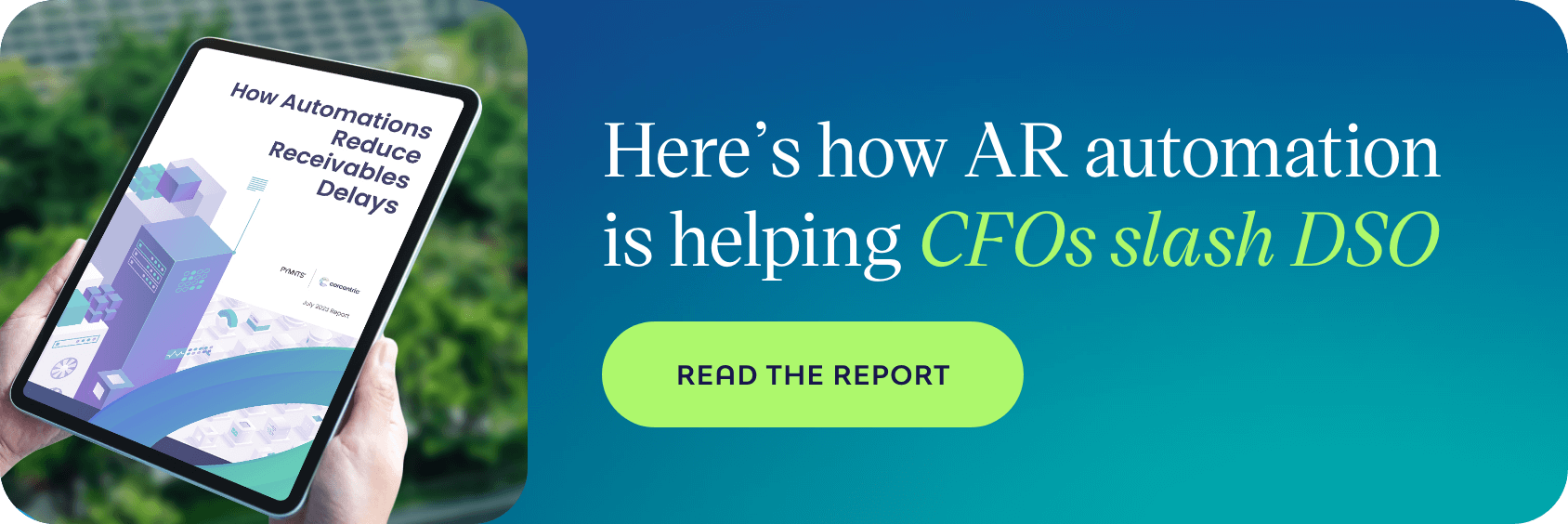Avoiding tech that requires a job req
Corcentric

Companies face so many challenges today, including inflation and rising interest rates, changes in the way we work, supply chain shortages, increasingly sophisticated cyberattacks, and difficulty in hiring. With all this facing them, business leaders, especially CFOs, must focus on how best to optimize their working capital in order to gain a competitive advantage, realize profitability, and grow their organization.
When it comes to optimization, you know that you need to eliminate the inefficiencies and inaccuracies of relying on paper and manual processes. To do this, you need to simplify and streamline all processes and workflows. You know that implementing new integrated technology will do just that, and a lot more. But do you have the skillsets in-house to optimize new technology solutions that you’ve invested a lot of capital in? If not, and many companies don’t, you’re now in the unenviable position of finding the right people in the most competitive job market we’ve seen in decades.
The ‘Great Resignation’ impacts every business
It doesn’t matter if you are a buyer or vendor; whether you’re looking at a source-to-pay (S2P), procure-to-pay (P2P) or order-to-cash (O2C) situation, you face the same obstacles when it comes to finding the right talent to fill the jobs that will move your company forward. The changing attitudes about work/life balance caused by COVID was a major factor for ‘The Great Resignation.’ Add in the problems of lower birth rates and a decline in college attendance and the result is dangerous shortages in all areas. A study from consulting firm, Korn Ferry found that “by 2030, there will be a global human talent shortage of more than 85 million people…Left unchecked, in 2030 that talent shortage could result in about $8.5 trillion in unrealized annual revenues.”
This problem is especially challenging for those in high tech. It is true that, right now, tech companies are the ones experiencing the most layoffs; but those same employees should have little problem finding employment in other sectors that want to accelerate their technical and digital transformation. Regardless of how many people with technical skills who worked at Google or Twitter or Facebook were let go, the number of high-tech workers is still too low. That same Korn Ferry study noted above found that the shortage of high-tech workers in the US could lead to annual losses of $162 billion in annual revenues. There is a downside to integrated technology that is designed to promote efficiency…it takes a long time to implement and requires a lot of people, people with specific knowledge; people that you likely do not have in your current workforce.
You could try to reskill your team. A Forbes article points to the World Economic Forum’s Future of Jobs Report that notes that, by 2025, half of all employees will need to reskill. The cost of doing that could be exorbitant and once you’ve done that, you need to hope those employees stay with you. Yet that same Forbes article states that “Employee retention is a real problem, with employee turnover costing US businesses $1 trillion every year.”
No tech is no answer
With the above situation in employee shortages, the reality is that you need technology to move forward. Avoiding technology is not only the wrong approach; it’s practically a formula for failure in most companies. In a global economy, companies need to be agile and flexible, not tied to old legacy processes. Though this applies to every business unit in a company, it is especially true for those in the Procurement and Finance functions.
Consider the amount of paper, time, and manual intervention involved in invoice processing for a single transaction: Procurement sends a purchase order (PO) to a supplier. The supplier sends the product along with a manifest. Once the product is received, it needs to be recorded as a Receipt of Goods document. The supplier sends an invoice to accounts payable (AP) and AP then needs to match all three documents (PO, Receipt of Goods, and Invoice), confirm that they match, and only if everything matches, send the invoice through to the company’s ERP for payment. Payment is then sent, either electronically or through paper checks, again resulting in a wait until the check is cashed.
Automation and digitization are vital here. Without an automated digital solution, visibility into invoice and payment status is lacking, if not non-existent, making it extremely difficult to accurately predict cash flow and working capital. That’s why companies are increasingly turning to technology, specifically digital transformation.
Technology alone won’t fulfill your needs
Most software platforms will offer the capabilities and benefits to streamline all of the steps listed above. But after implementation and onboarding, businesses are often left on their own (aside from regular updates). Your organization is left to optimize the system and the benefits it offers. If, as noted at the beginning of this blog, you don’t have the on-site talent, then the money, time, and effort you’ve spent on this technology will likely not result in a positive ROI. People are often reluctant to change, and if your staff has spent years working on legacy processes, they may actually revert to their known processes, accommodating the software to end up doing what was done before, just a bit faster.
That’s when you need to start recruiting efforts, trying to find the right candidates who will be able to get the best results. This is especially important as updates occur (as they do in nearly all solutions). Having the personnel on-site that is comfortable with the technology is the only way to stay ahead.
Unless, that is, you outsource this function to a solution provider that offers managed services backed up with technology. Managed service providers are responsible for maintaining and anticipating what will be necessary to optimize a wide range of processes and functions and is basically an alternative to hiring a new staff. In this relationship, the customer is still the ‘owner’ of the function. Organizations outsource to reduce and control cost, free up resources for other priorities, and share risk.
How Managed Services can improve business outcomes
Corcentric believes that a combination of technology, advisory, and managed services is essential for any solution to provide the ROI businesses are looking for. We know that third-party solutions work best when the provider is focused on more than just cost savings; that the full focus should be on business outcomes. We also know that, for us, “go live” is not a business outcome. That’s why our approach begins with a consultative and collaborative business process design aimed at ensuring the components of our Managed AP and Managed AR solutions are leveraged at every step—maximizing results, ensuring solution sustainability, and enabling continuous improvement.
Our solution provides benefits that include:
• Organizational efficiency and scalability
• Payments optimization
• Working capital improvement
• Cost reduction (including headcount reduction)
• Risk and fraud reduction
But we go farther than these expected benefits as we focus on long-term outcomes and continuous improvement. Businesses change as they grow and that means solutions need to be adaptable, scalable, and therefore sustainable. Along with that, there needs to be continuous improvement. The fact is that post-implementation, more information is available to improve on the initial design of the solution. This is where our consultative and collaborative efforts continue, even after implementation. Our Managed Services team manages day-to-day activities while a Customer Success Manager serves as a business partner throughout the term of the relationship, consistently monitoring and reviewing the data and information available to continuously improve and optimize the solution to help achieve those desired business outcomes. Some examples of this include:
-
- DPO optimization-The levers at our disposal for our Managed AP solution include the ability to align payment method to payment term – driving supplier behavior toward extended terms and/or preferable payment methods; leveraging benchmark data and market intelligence to identify where you may be paying suppliers earlier than the industry standard (and your competition); and deploying our consulting and strategic sourcing team to renegotiate pricing and terms with your suppliers.
- DSO reduction– Corcentric’s Managed AR solution lets you decide when you get paid, immediately reducing your Days Sales Outstanding (DSO). Going beyond technology, our Managed Services team monitors credit and collections due and chases down payments, eliminating receivables risk. Our Trade Finance offering ensures that suppliers are paid on time, every time. Corcentric pays the supplier on the terms the supplier dictates and then collects payment from the buyer on a timeframe agreed upon between the buyer and Corcentric. That’s a win-win for supplier and buyer.
It’s clear that there are many technology providers, business outsourcing organizations, and consulting firms with solutions that address some of the outcomes businesses are looking for. But dealing with multiple solutions from different vendors to answer different needs can be burdensome and difficult to manage. Instead, consider working with a provider that can answer all your needs—and one that will be with you for the long haul.
You can find out more about how Corcentric Managed AR liberates working capital in this white paper.
